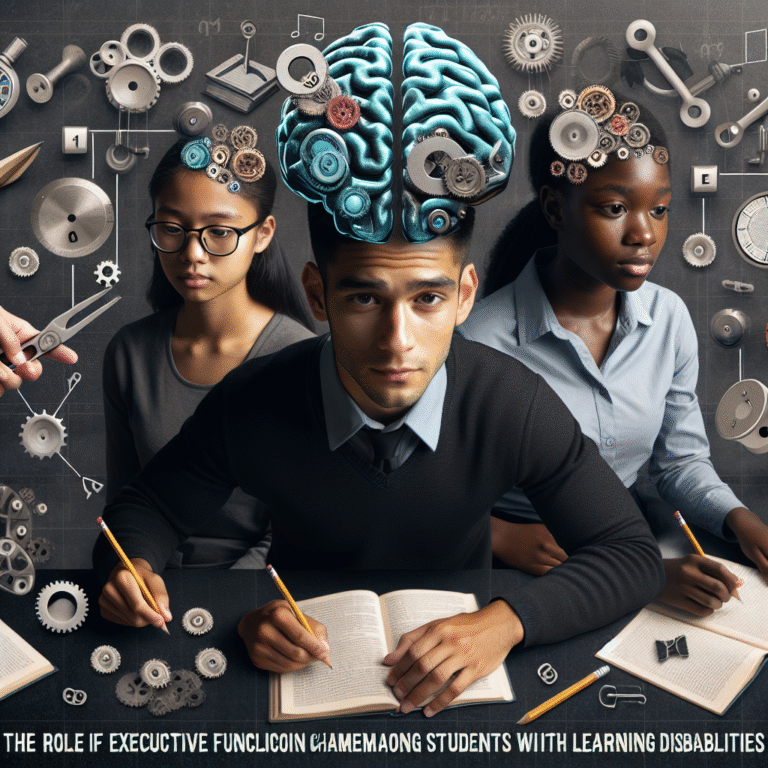
Raising Awareness: The Essential Role of Advocacy in Supporting Special Needs Families
Introduction
In a world that often overlooks the unique challenges faced by special needs families, raising awareness and providing advocacy have emerged as critical lifelines. Imagine a child with autism, struggling to find their voice and navigate a complex educational system. Picture their parents, overwhelmed and often isolated, searching for resources that can support their child’s development. For families like these, advocacy is not just a buzzword; it becomes an essential tool for survival and success. This article delves deeply into Raising Awareness: The Role of Advocacy in Supporting Special Needs Families, shedding light on how effective advocacy can change lives.
The Importance of Advocacy in Special Needs Families
Advocacy serves as a crucial mechanism that empowers families with special needs, amplifying their voices and ensuring their rights are upheld. It involves not only raising awareness of issues surrounding special needs but also actively working towards policy change and social acceptance.
Understanding Special Needs Advocacy
Special needs advocacy broadly encompasses various forms of support, including educational advocacy, legal representation, healthcare navigation, and community awareness initiatives. Advocates help families understand their rights, navigate complex systems, and obtain necessary resources. In essence, it is a bridge connecting families with the essential services they need.
The Landscape of Special Needs Advocacy
Here’s where it gets complex. The landscape of advocacy is fraught with challenges. According to recent data from the National Center for Special Education Statistics, nearly 14% of public school students receive special education services. This statistic underscores the necessity of advocacy in ensuring these families receive the support they require.
| Year | Percentage of Students Receiving Special Education |
|---|---|
| 2020 | 13.7% |
| 2021 | 13.9% |
| 2022 | 14.0% |
| 2023 | 14.1% |
This table highlights not only the growing number of families needing advocacy but also the pressing need to raise awareness about their unique challenges.
Case Studies Illustrating Effective Advocacy
Case Study 1: Educational Advocacy in Action
Take the story of a family in Ohio advocating for their son with dyslexia. Struggling for years to receive appropriate accommodations in school, the parents took matters into their own hands. They collaborated with local advocates to educate school officials about dyslexia and the importance of tailored learning plans.
Analysis: This case exemplifies how raising awareness among educators can foster an environment where children with special needs are supported. The family’s persistence paid off—they not only secured an Individualized Education Program (IEP) for their child but also prompted the school to implement training for all staff on dyslexia awareness.
Case Study 2: Healthcare Advocacy
Another powerful story unfolds in California, where a mother of a child with Down syndrome successfully navigated the healthcare system. After facing numerous rejections for necessary therapies, she connected with healthcare advocates who educated her on her family’s rights. Together, they appealed to the insurance provider, resulting in coverage for critical therapies.
Analysis: This case illustrates how raising awareness about healthcare rights can lead to significant breakthroughs for families. Advocacy in this context empowered not only the mother but also sparked discussions within the community about healthcare accessibility for children with disabilities.
The Role of Community in Advocacy
Building Support Networks
Community plays an instrumental role in the advocacy landscape. Local organizations focusing on special needs awareness can offer support groups, workshops, and events that not only educate but also empower families.
Resources:
- Local Advocacy Groups: Organized networks that can offer guidance and support.
- Workshops and Training: Opportunities for families to learn about their rights and available resources.
Community Events and Awareness Campaigns
Cities across the United States host events focused on raising awareness about special needs. For instance, “Autism Awareness Month” is observed in April, bringing people together for educational sessions, workshops, and walks. These events do not just raise awareness; they help foster a sense of community and belonging among families.
The Legislative Landscape: Advocating for Change
Understanding Policy Impact
Advocacy at the legislative level can transform the experiences of special needs families. By engaging with policymakers, advocates can bring about essential changes in laws that affect access to education, healthcare, and community resources.
Important Legislation
Key laws such as the Individuals with Disabilities Education Act (IDEA) and the Americans with Disabilities Act (ADA) demonstrate the impact of effective advocacy. Advocates work tirelessly to ensure these laws are upheld and that new measures are introduced to further protect the rights of special needs families.
Technology as an Advocacy Tool
Harnessing Social Media and Online Platforms
In today’s digital world, technology becomes a powerful ally. Advocacy organizations are leveraging social media to raise awareness and build communities. Platforms like Facebook, Twitter, and Instagram allow families to share their stories, garner support, and spread crucial information.
Examples of Successful Online Campaigns
- #ActuallyAutistic: This movement encourages those on the autism spectrum to share their experiences, helping to raise awareness and change perceptions.
- Special Needs Awareness Month Campaigns: Many organizations use hashtags and digital posters to engage communities and spread information.
Overcoming Challenges in Advocacy
Barriers Faced by Families
While advocacy can yield positive outcomes, many families encounter barriers. Lack of awareness about available resources, insufficient funding for advocacy programs, and the emotional toll of navigating systems can hinder progress.
Strategies for Families
- Educate Yourself: Knowledge is power. Families should familiarize themselves with their rights and available resources.
- Connect with Local Advocates: Build a network of support by reaching out to local organizations.
- Participate in Community Events: Engagement can create a ripple effect, influencing more individuals to understand the issues at hand.
Conclusion
In summary, Raising Awareness: The Role of Advocacy in Supporting Special Needs Families is not just an essential conversation; it is a clarion call for change. By advocating for these families, we create a more inclusive society that respects and uplifts those with special needs. Your voice, your actions, and your commitment can make a difference.
If you are a parent, educator, or community member, consider how you might contribute to this essential work. Whether it’s attending local events, sharing resources online, or directly advocating for someone in need, every effort counts. Together, we can embark on a profound journey toward true understanding and acceptance.
FAQs
-
What is special needs advocacy?
Special needs advocacy involves efforts to support families with disabilities by ensuring they have access to necessary resources, services, and rights. -
How can I get involved in advocating for special needs families?
You can start by connecting with local advocacy groups, attending community events, and educating yourself about the rights of individuals with disabilities. -
What laws protect special needs families?
Key legal protections include the Individuals with Disabilities Education Act (IDEA) and the Americans with Disabilities Act (ADA), which safeguard rights related to education and accessibility. -
How can technology aid in advocacy?
Social media platforms enable advocates to raise awareness, share resources, and build community support for special needs issues. - What are some common challenges faced by special needs families?
Families often encounter barriers such as lack of information, financial limitations, and emotional stress in navigating the systems meant to support them.















